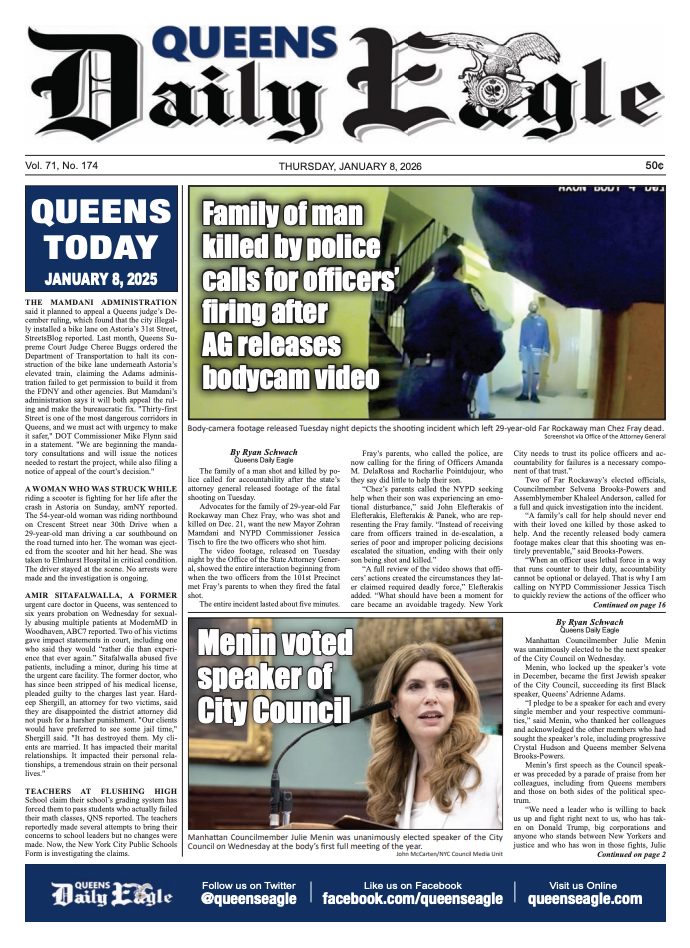Appellate court tosses Assembly maps
/A panel of justices on the Appellate Division, First Department bench tossed the state’s Assembly maps on Friday, June 10, 2022. Photo by ajay_suresh/Wikimedia Commons
By Jacob Kaye
Weeks before New Yorkers get set to vote in State Assembly primary elections, state appellate court judges tossed the recently redrawn Assembly lines, possibly confirming that the upcoming election and the November general election will be the first and last times the districts are used.
The Appellate Division, First Department ruled Friday that the Assembly maps, like the Senate and congressional maps before them, were unconstitutional because the state legislature followed improper procedure when it drew them.
Such was the fate of the Senate and congressional maps, which were struck down by the Court of Appeals in April. The state’s top court didn’t rule on the Assembly maps because they were not part of the petitioner's arguments during previous appeals.
But unlike the Senate and congressional elections, which were pushed back until August, Assembly elections will stay on schedule and be held on June 28, with the new maps going into effect in the coming years.
The maps were again brought into question by petitioner Gavin Wax, the president of the New York Young Republican Club, who filed a motion with New York Supreme Court Justice Patrick McAllister last month in an effort to get the Assembly maps tossed.
McAllister ruled against Wax, citing the short turnaround time to allow the appointed special master to redraw a new set of district lines.
The panel of appellate justices agreed with McAllister on the timing in their decision Friday.
“Supreme Court properly denied the petition to the extent it seeks to obtain a new state assembly map for use in the 2022 assembly elections,” the ruling reads.
“To this extent, the petition, which includes a request for an order delaying the 2022 assembly primary election to August or September 2022, is barred by the doctrine of laches, given petitioners’ unreasonable and prejudicial delay in bringing this proceeding,” the justices’ ruling continued. “The request for a delay of the 2022 assembly primary elections is denied in any event, because the redrawing and implementing of a new assembly map before a 2022 primary election delayed even until September is, at this late date, no longer feasible.”
However, where McAllister found that the timing invalidated the argument, the judges ruled that this year’s elections would use the current maps, and new lines would be drawn in time for the state’s 2024 election cycle.
The case will now be sent to New York County Supreme Court, where a judge will determine how the maps will be redrawn.
“Based on today’s decision by the Appellate Division, New Yorkers will not be subjected to ten years of unconstitutional representation,” Wax said in a statement. "Today is a historic day for justice in New York State.”
The decision stems from the processes by which the maps were drawn – the same process that was ruled unconstitutional by the Court of Appeals.
For the first time in the state’s history, the New York Independent Redistricting Commission was tasked with drawing the state’s electoral lines this year during the state’s once-in-a-decade redistricting process.
After the IRC failed to meet its deadline, state lawmakers, led by state Democratic leaders, picked up the responsibility based on a recently passed law.
Justices on the state’s high court ruled that the recently passed law, and the lawmaker’s decision to draw the maps themselves was unconstitutional – the constitutional amendment that created the IRC and gave it its power was ambiguous on what should happen if it fails, the justices said.
After striking down the state’s Senate and congressional maps, the Board of Elections moved the primary date for those offices from July 28 to Aug. 23.
Assembly elections and statewide elections, including for governor, will be held on July 28.
“The Courts have again ruled in favor of the people, and against the establishment politicians who tried to make a mockery of our State Constitution to preserve their longevity in office,” said Aaron Foldenauer, one of the attorneys who brought the suit and a former mayoral candidate.
“The people of New York voted to have non-partisan lines drawn so that politicians could not gerrymander their districts to maintain their own power,” he added. “Today, the Court vindicated the rights of New Yorkers to have free and fair elections.”




